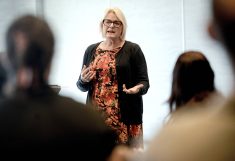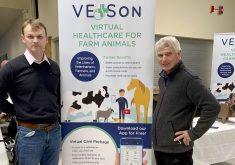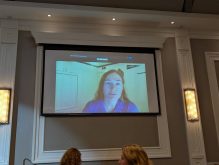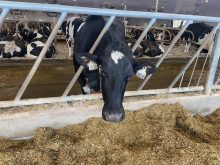As a five-year-old, Larry Davis remembers an intense tingling that shot up his arm when he cleaned the dairy barn water bowls.
“I just said, ‘I can’t do it, I can’t put my hand in there, it stings my whole arm’,” recalls the Ontario Federation of Agriculture director and co-chair of OFA’s Uncontrolled Electricity Working Group, formed in 2007.
His father couldn’t feel the current, but Davis said his younger self was barefoot and standing in damp bedding, which made him a perfect conduit. When he shares his story as an adult, he finds many farmers admit to the same experience.
Read Also
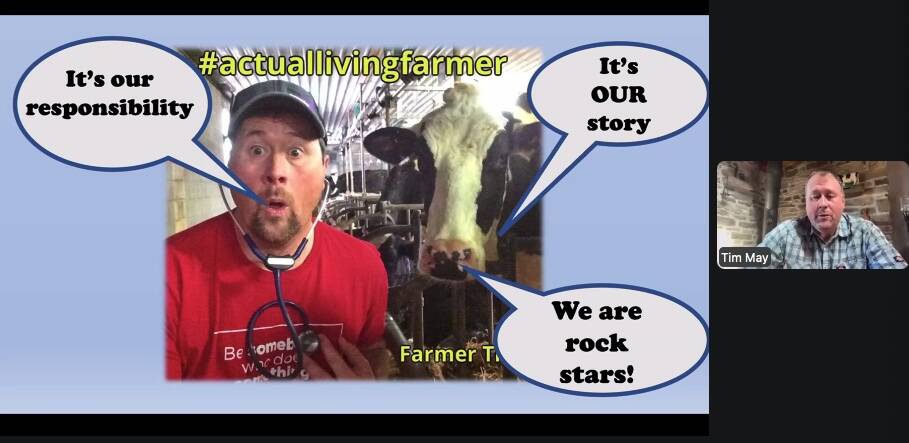
How stories promote farm safety
Speakers at CASA online conference explain how personal stories can be more valuable than statistics in communicating importance of farm safety
“So, it’s definitely there,” Davis said, referring to uncontrolled ground current.
Why it matters: Half a century’s worth of farmers have raised the alarm about uncontrolled ground current pollution that affects livestock and animal health, but it has done little to bring change.
Ontario uses a multi-grounded neutral system in which significant electrical current enters the earth as a ground instead of through a neutral wire that returns it to a substation.
Its impact on cows isn’t subtle. Initially, it could cause a reluctance to eat, drink, or be milked. Then somatic cell counts rise, as do incidents of mastitis, burn marks, jutting bones, aborted calves, lower fertility rates and possible death.
In the 1970s, Lee Montgomery, a Dover-area dairy farmer, launched a multi-decade odyssey that saw him take Ontario Hydro (now Hydro One Network) to court twice after tying the unusual electrical activity on his farm to the uncontrolled ground current flowing to a nearby substation.
Eventually, he accepted a settlement. Hydro removed the substation six months after the cows left the farm, leaving Montgomery $400,000 in debt and without his internationally respected Holstein dairy herd.
When his wife, Donna, died from liver cirrhosis while suffering from a swollen stomach and joints and low blood platelet counts, Montgomery said he saw the exact symptoms in the cows he sent to slaughter.
“People are the bottom line, not Lee Montgomery, not cows. People,” he said then. “They’re killing people with this. (Cows) are the canary in the coal mine.”
Davis left the dairy game after spending hundreds of thousands of dollars in efforts to mitigate the increased discomfort displayed by his herd. He had an electrician test for voltage at every step.
“He would connect to the milk cooler and the floor in the milk house, so clean concrete,” Davis said.
“Because we had (unrecognized) stray voltage, I spent literally hundreds of thousands to make the cows feel better. And they never did.”
It isn’t only the animals who suffer. Farmers’ mental health takes a hit when they attempt to raise healthy livestock but are met with decreased productivity, increased financial burden and threatened farm viability.
“We’ve got the big wheel, and the wheel is turning, but it’s not going anywhere,” said Davis. “There’s a dire need out there for this to happen, and get it done. Should I contact Minister Smith and say ‘come to this farm and look at this with me?’ Because there isn’t a free time for the cows, it’s consistent.”
Still no resolution
Despite mounting scientific and anecdotal on-farm evidence that shows the devastating impact of uncontrolled ground current on livestock and people, there is little progress toward a solution.
Montgomery died in May 2022 but was a bulldog to the end, constantly nipping at the heels of politicians and Hydro One bigwigs to work with the Ontario Energy Board and electricity providers to stop ground current pollution.
Former Liberal MPP Maria Van Bommel’s private member’s bill, An Act Resecting Ground Current Pollution in Ontario, was inspired by Montgomery and received unanimous approval in 2006 before Ontario called an election.
Similarly, in 2016, at the behest of Montgomery and agriculture organizations, then-Conservative MPP Rick Nicholls proposed another private member’s bill, Elimination of Ground Current Pollution, which passed with cross-party support but stagnated at the standing committee level.
If made into law, the bill would require electricity providers to respond within 10 days of receiving a complaint, investigate the claim within 30 days, and take all necessary steps to eliminate the objectionable current flow within six months.
The Uncontrolled Electricity Agricultural Working Group, including the OFA, Hydro One, Farm and Food Care Ontario, and other agricultural stakeholders, formed in 2014 to study the issue via a handful of on-farm visits but found few solutions.
Hydro One, in partnership with the OFA, launched the Farm Rapid Response Team (FFRT) in the fall of 2016. While there’s some progress in identifying, assessing and mitigating on-farm electrical issues, Lorne Lantz, a member of the Working Group, said stray voltage limits are too high and the testing protocols prevent accurate readings.
Lantz said farms with half an amp to two-and-a-half amps of primary neutral current are getting the green light from FFRT because they test the head rail to concrete, which is a poor conductor.
“We need fair testing. When (FFRT) test for voltage, they’ve got to test to earth, and the other thing is they’ve got to measure the current going back on the farm,” said Lantz. “We’ve got to step numbers for even a half volt, but the current should be limited to less than 100 milliamps going into a farm. If it exceeds that level, it requires a blocker. That’s an easy test.”
Lantz advised producers to purchase and install a Dairyland isolator, for $2,000 to $2,500, if FFRT testing doesn’t trigger mitigation even if tests show significant current.
“In many cases, it would pay for itself in a month from what they’re losing in vet bills and low production, all that,” said Lantz. “If you look at it, you can soon recover (the cost), especially a larger herd.”
He acknowledges the numbers are dropping as more farms install blockers, making the issue look less dire. But without fair and realistic testing, the numbers are skewed.
“We’re getting a lot of them cleaned up along the way as we go,” he said. “I’ve got close to 250 to 300 farms that I’ve tested (since 2008).”
Nicholls’ bill sits in limbo, but in 2021, energy minister Todd Smith launched the Stray Voltage Working Group (SVWG) with representatives from the OFA, Christian Farmers Federation of Ontario, Dairy Farmers of Ontario, OEB, Hydro One Networks, Electrical Safety Authority, Electricity Distributors Association and Electrical Contractors Associations of Ontario.
Between October 2021 and April 2022, the group met five times, gathering testimonials and insight from veterinarians to get an overview of current practices, standards and customer experiences to mitigate on-farm current pollution.
SVWG’s April 2022 report outlined 10 government recommendations, including an increased need for Ontario farmer-based communication and education strategies, prioritizing animal welfare, actions to prevent stray voltage before it occurs, and ensuring a coordinated approach across the electricity sector to prevent or contain stray voltage when it occurs.
It challenged the government to review current standards and procedures to reflect the future demands and requirements on the electricity grid and farms. It pushed for a government response before the end of 2022.
More than a year later, there is no movement.
“Meaningful change has been slow to come,” said Davis. “Stray voltage problems remain undiagnosed or unresolved because the level of current causing the issue falls within the existing standards of the provincial electrical code.”
The report said the OEB acknowledged and supported SVWG discussions and claimed it would seek to further the recommendations if requested by the government.
While Davis said he appreciates that Smith set up the committee, the onus remains on SVWG to push the government to act.
“Lowering that code threshold from one volt to a quarter of a volt, for example, would be one way to help encourage action across all electrical stakeholders,” he said, adding humans don’t feel current that low, but livestock do.
Narrowing voltage levels would trigger tighter guidelines for FRRT and potentially spark innovation.
“The SVWG must continue to collectively encourage the government to act on these recommendations,” he said.
“Solving the stray voltage issue will ensure better animal welfare, reduce farmer stress, and ensure a strong and resilient food supply system for Ontario that is equipped to meet growth goals.”





